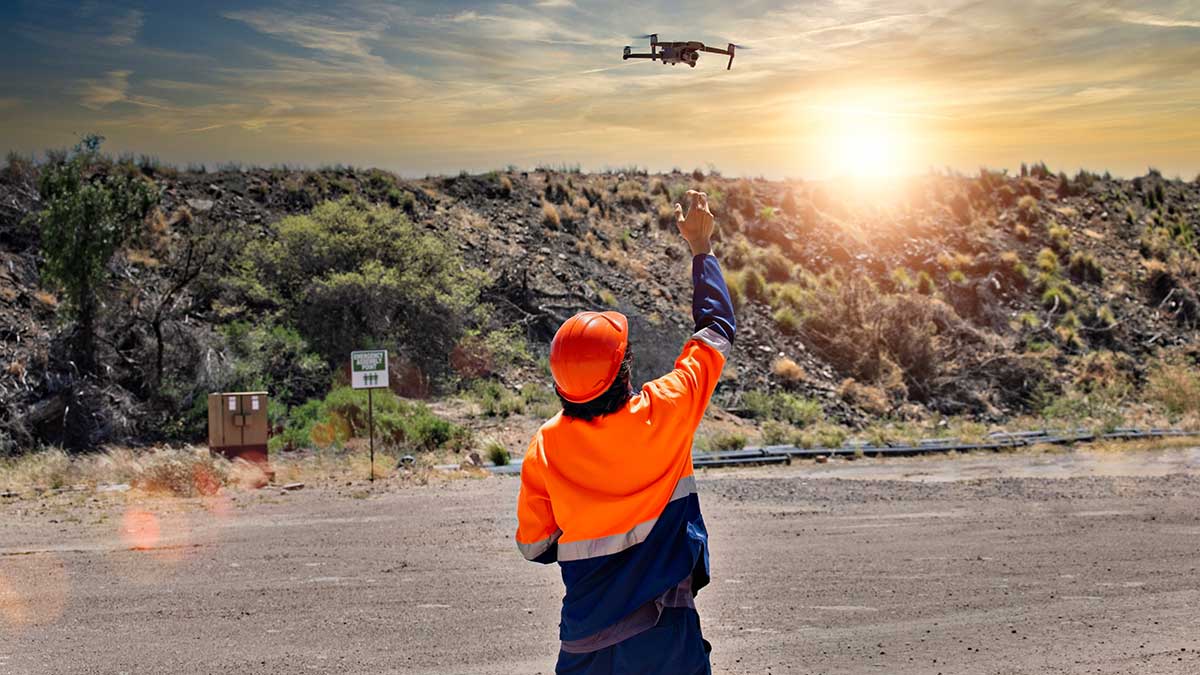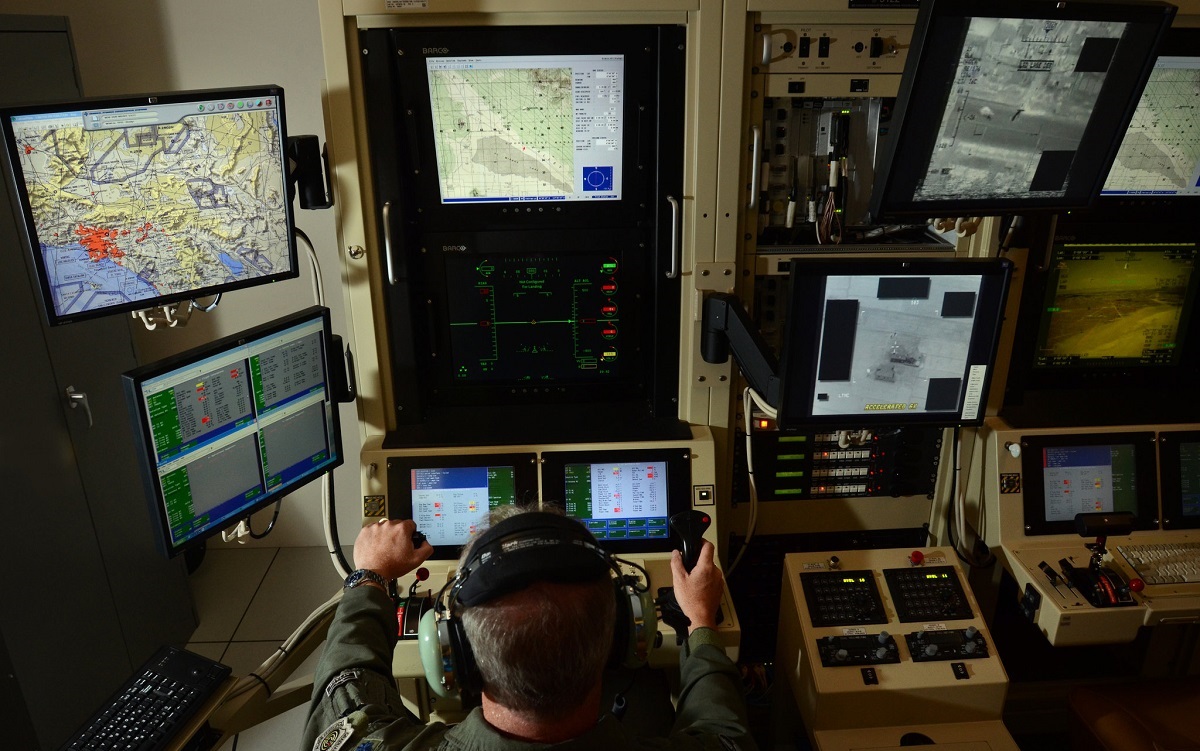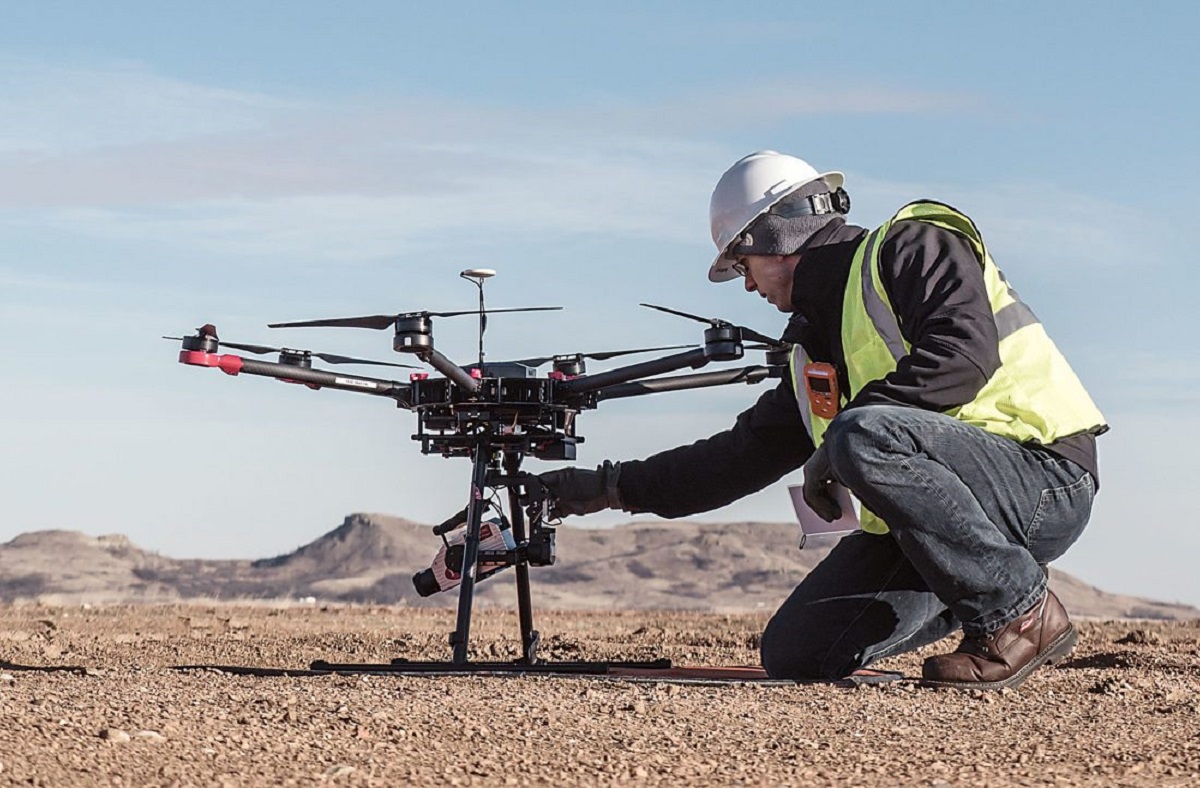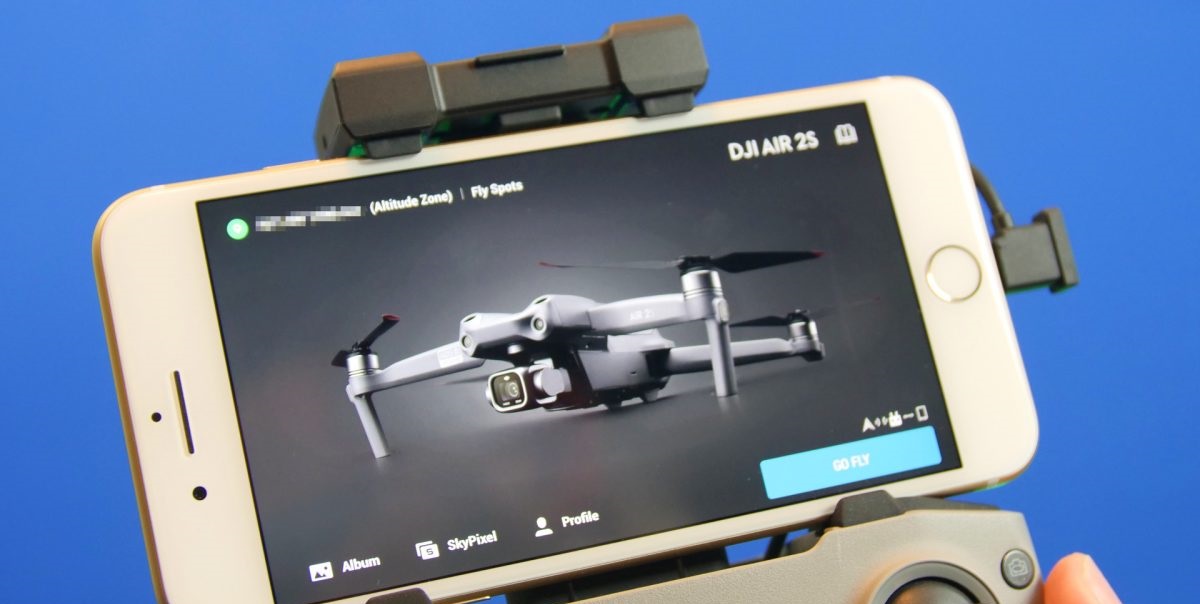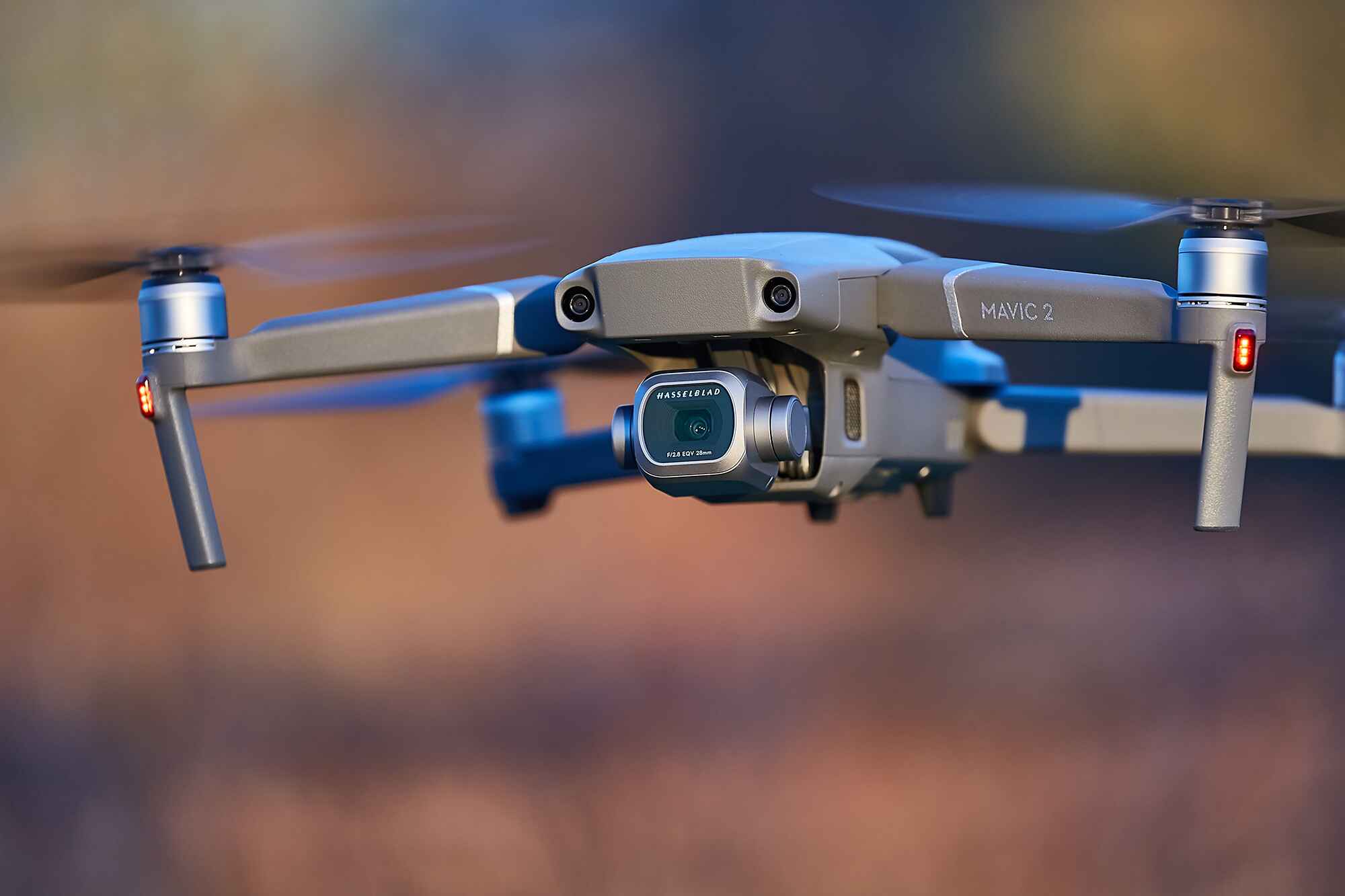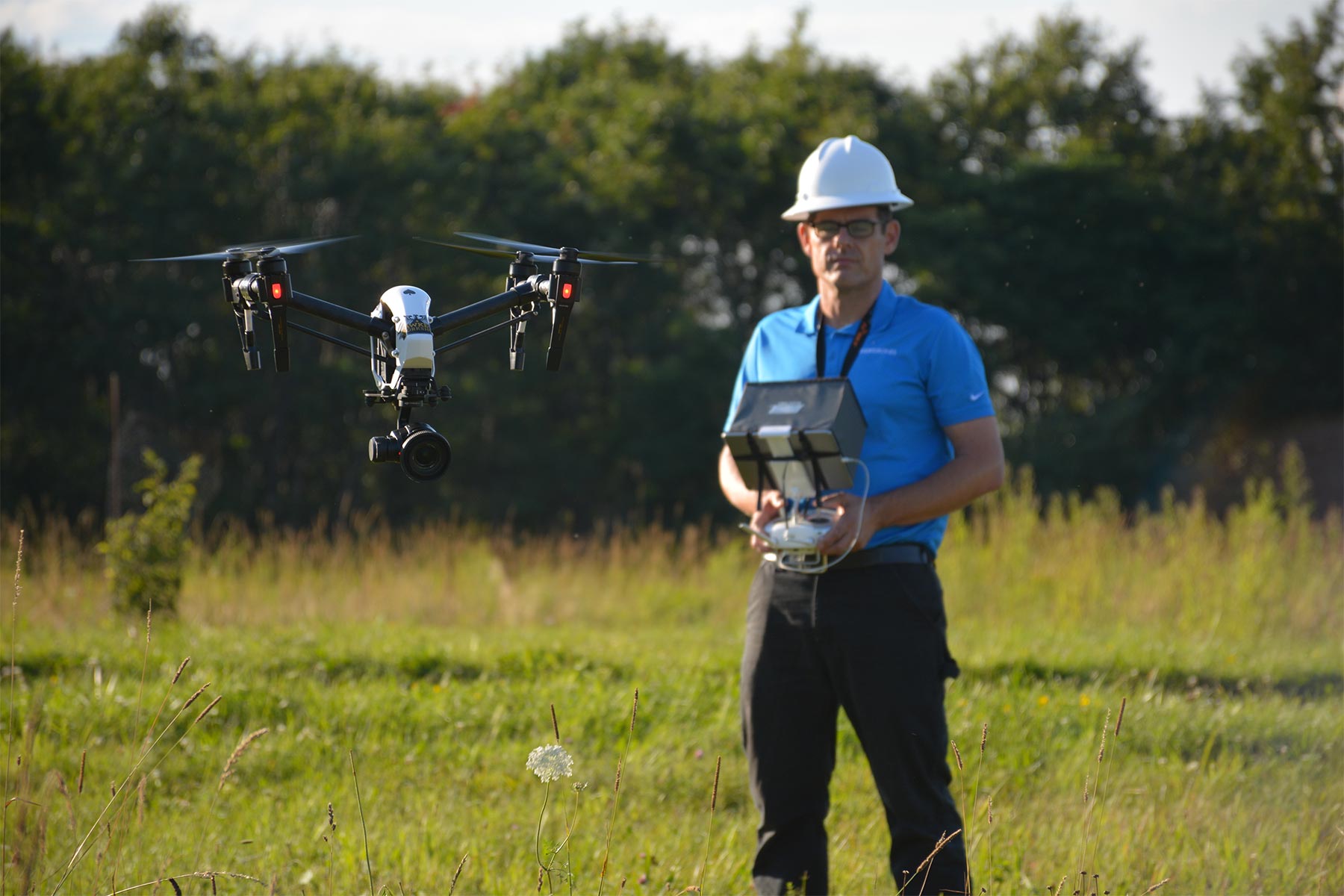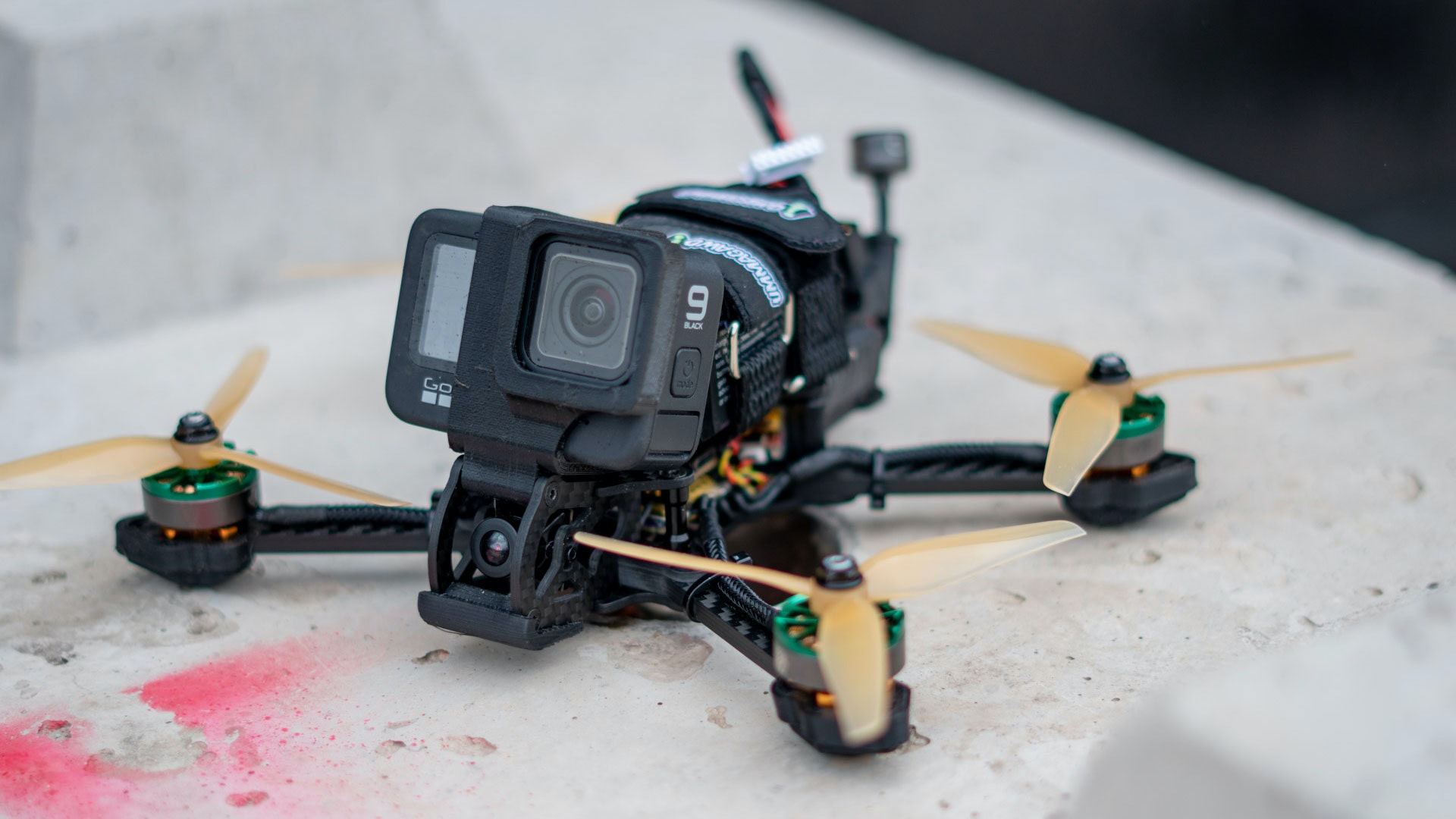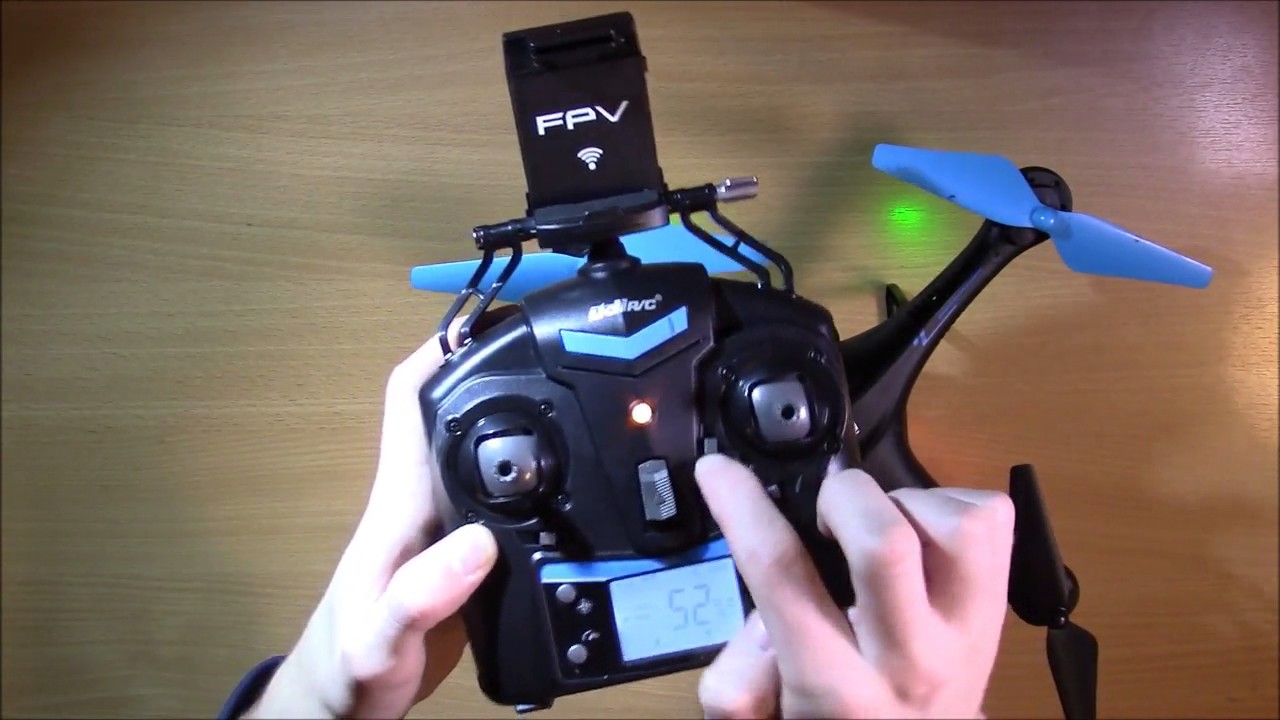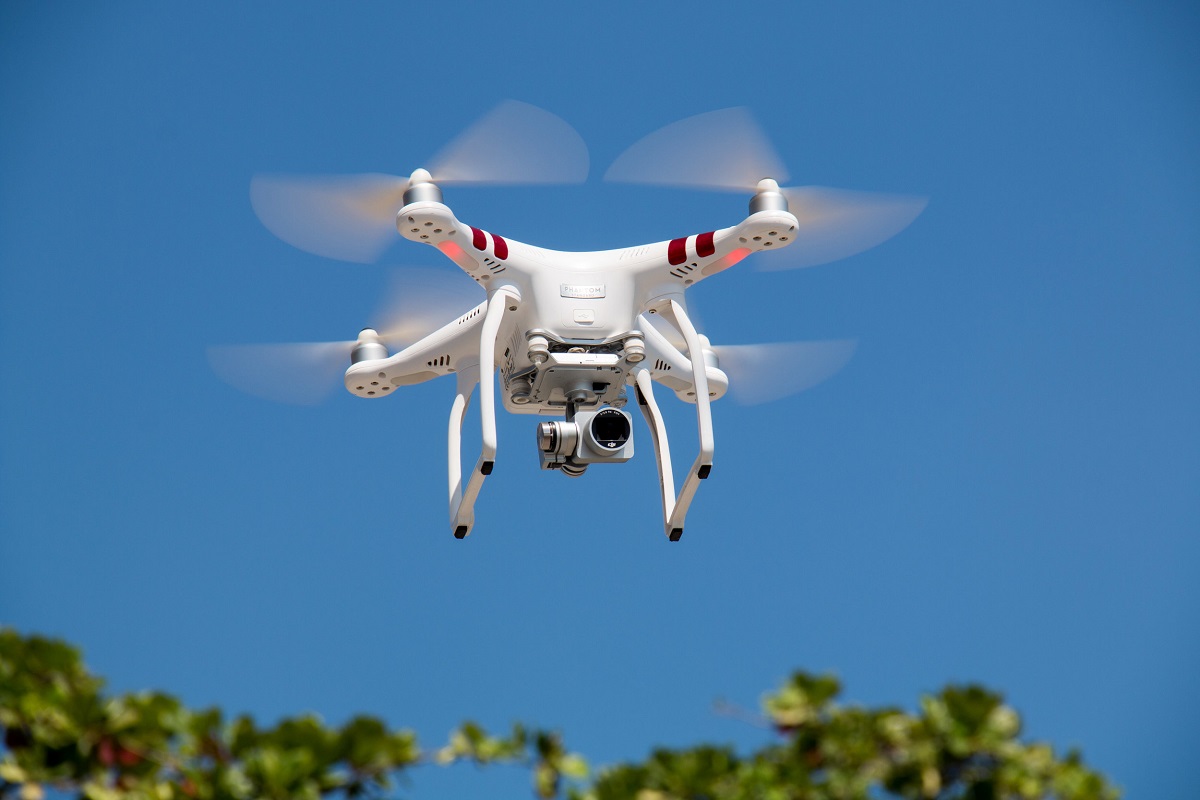Introduction
Are you fascinated by the idea of commanding a drone to soar through the sky, capturing breathtaking aerial footage and exploring new perspectives? Becoming a drone pilot can offer you an exhilarating and rewarding experience, whether as a hobbyist or a professional. However, before taking flight, there are important considerations to keep in mind.
In this guide, we will walk you through the necessary steps to kickstart your journey as a drone pilot. From selecting the right drone to obtaining your remote pilot certificate, mastering flight maneuvers to capturing stunning aerial imagery, we will cover all the essential aspects of becoming a skilled drone pilot.
But first, let’s discuss why drone piloting has gained popularity in recent years. Advances in drone technology have made these flying machines more accessible, affordable, and easier to operate. Drones have a wide range of applications, from aerial photography and videography to surveying, inspection, and even parcel delivery.
As the popularity of drones has soared, so have the laws and regulations governing their use. It is crucial for aspiring drone pilots to have a clear understanding of these rules to ensure safe and legal operation. Additionally, developing the necessary skills and expertise in drone flight and aerial cinematography is vital for capturing stunning visuals and achieving professional-grade results.
In the following sections, we will guide you through the process of becoming a skilled drone pilot, covering everything from choosing the right drone to maintaining and repairing it. Let’s embark on this exciting journey together and discover the wonders of drone piloting.
Choosing the Right Drone
When it comes to selecting a drone, there are a few key factors to consider to ensure that you choose the right one for your needs and budget. With the market flooded with various models and brands, it’s important to do your research and make an informed decision.
Firstly, determine the primary purpose of your drone. Are you planning to use it for aerial photography or videography? Or are you more interested in racing drones for adrenaline-pumping thrills? Different drones are designed for different purposes, so it’s essential to choose one that aligns with your specific goals.
Next, consider the drone’s specifications and features. Look at factors such as flight time, range, and payload capacity. The flight time determines how long the drone can stay airborne, while the range determines how far it can fly from the remote controller. Additionally, if you plan to attach a camera or other accessories to your drone, make sure it can handle the weight and provide stable flight.
Another crucial aspect to consider is the drone’s camera quality. If you’re interested in aerial photography or videography, opt for a drone with a high-quality camera that can capture sharp images and smooth videos. Look for drones with features like gimbal stabilization, adjustable settings, and obstacle avoidance to enhance your shooting capabilities.
Additionally, don’t forget to check the drone’s compatibility with your mobile device or controller. Many drones require a smartphone or tablet for live video streaming and flight control. Ensure that your device is compatible with the drone’s app or controller, and the connection is seamless.
Furthermore, consider your skill level as a pilot. If you’re a beginner, it’s advisable to start with a drone that has easy-to-use flight controls and stability features like altitude hold and beginner-friendly modes. As you gain more experience, you can upgrade to more advanced models.
Last but not least, set a budget for your drone purchase. Drones are available in a wide price range, so it’s important to determine how much you’re willing to invest. Keep in mind that more expensive drones often offer better performance, higher-quality cameras, and advanced features.
By carefully considering these factors, you’ll be able to choose a drone that suits your needs and preferences. Remember to read reviews, watch demonstration videos, and seek advice from experienced drone pilots before making your final decision.
Understanding Drone Laws and Regulations
Before taking to the skies as a drone pilot, it is essential to familiarize yourself with the laws and regulations governing drone operations in your country or region. These rules are in place to ensure the safety of airspace, people, and property, and compliance is crucial for responsible drone piloting.
Start by researching the specific laws and regulations in your area. Depending on where you live, there may be different requirements for drone registration, pilot certification, flight restrictions, and privacy considerations. Familiarize yourself with these guidelines to avoid any legal issues while operating your drone.
In many countries, drones above a certain weight threshold must be registered with the appropriate aviation authority. Make sure you understand the registration process and complete it if necessary. Failure to register a drone that requires it can result in fines or other penalties.
Obtaining a remote pilot certificate is also a common requirement. This certification demonstrates that you have the necessary knowledge and competency to operate a drone safely. In several jurisdictions, you may need to pass a written exam or complete an online course to obtain this certificate. Check with your local aviation authority for the specific requirements in your area.
Flight restrictions are another important aspect to be aware of. Certain areas, such as airports, military bases, and national parks, may have strict no-fly zones or restricted airspace. Unauthorized drone flights in these areas can pose a threat to aircraft, people on the ground, and wildlife. Use a reliable drone app or website that provides up-to-date information on airspace restrictions to ensure you fly in permitted areas.
Respecting privacy is critical when operating a drone. Avoid flying over private property without permission and be mindful of people’s privacy and personal space. Always seek consent before capturing images or videos that may involve individuals or their property.
It is also important to familiarize yourself with general safety guidelines for drone operations. Stay clear of manned aircraft, fly below the maximum allowed altitude, and maintain line of sight with your drone at all times. Regularly inspect and maintain your drone to ensure it is in good working condition, and follow manufacturer guidelines for battery safety.
By understanding and adhering to the drone laws and regulations in your area, you can operate your drone safely and legally. Stay informed about any updates or changes to these rules, as they may evolve over time. Remember, responsible drone piloting helps protect the safety and reputation of the drone community as a whole.
Getting Your Remote Pilot Certificate
If you intend to fly a drone commercially or in certain designated airspace, obtaining a remote pilot certificate is often a requirement. This certificate is a testament to your knowledge and understanding of drone operations and safety protocols.
The process of obtaining a remote pilot certificate may vary depending on your country or region, but there are general steps that you can follow to achieve this certification.
Firstly, familiarize yourself with the requirements set by the aviation authority in your area. In many cases, this involves passing a written exam that covers topics such as airspace classification, weather conditions, drone operation regulations, emergency procedures, and more. Study guides and online resources are often available to help you prepare for the exam.
Once you feel confident in your knowledge, schedule and take the written exam. The exam may be administered in person at an approved testing center or online, depending on the options available in your location. Be sure to review any specific requirements, such as identification documents or registration fees, before taking the exam.
If you pass the exam, congratulations! You have taken an important step towards becoming a certified remote pilot. Depending on the process in your area, you may be issued a temporary certificate while you await the official document.
It’s important to note that remote pilot certificates may have expiration dates or require renewal after a certain period. Stay informed about any renewal requirements and ensure your certification remains up to date.
Obtaining a remote pilot certificate demonstrates your commitment to safe, responsible, and legal drone operations. It showcases your understanding of airspace regulations, weather conditions, and emergency procedures, making you a more competent and trustworthy drone pilot.
Remember, even if you are flying recreationally or in areas that do not require certification, it is still beneficial to educate yourself about drone safety practices and relevant regulations. This knowledge will help you operate your drone in a responsible manner and contribute to the overall safety and reputation of the drone community.
Learning the Basics of Drone Flight
Mastering the basics of drone flight is essential for becoming a skilled and confident drone pilot. Understanding the controls, maneuvers, and flight dynamics will allow you to navigate your drone smoothly and with precision.
Begin by thoroughly reading the instruction manual that comes with your drone. Familiarize yourself with the different components, such as the remote controller, propellers, and battery. Take note of any specific instructions or safety precautions provided by the manufacturer.
Before your first flight, find a suitable location that provides ample space, minimal obstacles, and minimal distraction. Open areas, such as parks or fields, are ideal for beginners. Ensure that the weather conditions are suitable for flying, with minimal wind and good visibility.
Start by performing a pre-flight checklist to ensure everything is in order. Check that the drone’s battery is adequately charged, the propellers are securely attached, and the camera or other accessories are properly mounted. Also, ensure that the area is clear of people, animals, and other potential hazards.
Once you’re ready to take off, power on the drone and make sure it establishes GPS connection and acquires the necessary satellites. Follow the drone manufacturer’s instructions to arm the motors and prepare for takeoff. Gently increase the throttle to lift the drone off the ground, ensuring a smooth and controlled ascent.
Practice basic maneuvers, such as hovering in place, horizontal movement in different directions, and altitude changes. Familiarize yourself with the control sticks on the remote controller and understand how they affect the movement of the drone. Take your time to develop a feel for the controls and maintain a steady hand.
As you gain confidence in basic flight, gradually venture into more advanced maneuvers. Practice figure-eight patterns, circle flights, and controlled descents. Experiment with different flight modes, such as sport mode or cinematic mode, to explore the full capabilities of your drone.
Pay attention to the drone’s battery level and flight time to ensure you have enough power for a safe return. Many drones have built-in low battery warnings or automated return-to-home features to prevent accidental flyaways.
Finally, always stay vigilant of your surroundings while flying. Be aware of any potential obstacles, power lines, or other aircraft in the vicinity. Maintain a safe distance from people, animals, and structures to prevent accidents.
Remember, practice makes perfect. The more you fly and familiarize yourself with the controls, the more confident you will become as a drone pilot. Take your time, be patient, and enjoy the process of learning to master the basics of drone flight.
Practicing Aerial Photography and Videography
One of the most exciting aspects of drone piloting is the opportunity to capture stunning aerial photography and videography. With a drone, you can explore unique perspectives and create captivating visuals. However, mastering the art of aerial photography and videography requires practice, creativity, and an understanding of the principles of composition.
Begin by familiarizing yourself with the camera settings and controls on your drone. Experiment with different modes and settings, such as aperture, shutter speed, ISO, and white balance, to achieve the desired look for your photos or videos. Understanding these settings will allow you to have more control over exposure and image quality.
Composition plays a vital role in creating visually appealing shots. Pay attention to elements such as framing, leading lines, symmetry, and the rule of thirds. Use these techniques to guide the viewer’s eye and create a sense of balance and interest in your aerial images.The rule of thirds suggests placing your subject off-center in the frame to add more dynamic and engaging compositions.
In aerial videography, smooth and stabilized footage is crucial for producing high-quality videos. Many drones come equipped with gimbal stabilization systems to minimize the effects of drone movements. However, it is still important to fly steadily and smoothly to ensure clear and professional-looking footage. Practice using slow, deliberate movements when panning, tilting, or tracking subjects to avoid jerky motions.
Consider the timing and lighting conditions when planning your aerial photography or videography sessions. Early morning or late afternoon, when the sun is lower in the sky, can provide warm and soft lighting that adds depth and dimension to your shots. Avoid shooting in harsh midday sunlight, as it can cause harsh shadows and blown-out highlights.
Experiment with different angles and perspectives to add variety to your aerial shots. Fly at different altitudes, tilt the camera at interesting angles, and explore different vantage points to capture unique and visually stunning compositions. Don’t be afraid to think outside the box and try unconventional perspectives to create compelling visuals.
While exploring and practicing aerial photography and videography, be respectful of privacy and adhere to local laws and regulations. Avoid capturing images or videos of people without their consent, and don’t fly over restricted areas or private properties. Always prioritize safety and ethical considerations when it comes to practicing aerial photography and videography.
By continuously experimenting, practicing, and refining your skills, you can develop a unique artistic style and produce breathtaking aerial imagery. Allow your creativity to flourish and let your drone be a tool for capturing awe-inspiring visuals from new heights.
Mastering Advanced Maneuvers and Techniques
Once you have mastered the basics of drone flight, it’s time to take your skills to the next level by learning advanced maneuvers and techniques. These maneuvers will allow you to capture more dynamic footage, navigate challenging environments, and showcase your creativity as a drone pilot.
One of the first advanced maneuvers to practice is flying in tight spaces. This involves navigating through narrow gaps, flying close to trees or buildings, and executing precise movements. Start with larger openings and gradually work your way towards more challenging obstacles. This maneuver will enhance your control and precision as a pilot.
Another important skill to develop is flying in different weather conditions. While it’s essential to prioritize safety and avoid flying in extreme weather, practicing in mild wind or light rain can help you become comfortable in varying conditions. This skill will prepare you for unexpected weather changes during real-world flights.
Mastering the art of smooth and cinematic movements is crucial for creating professional-grade aerial footage. Focus on performing gradual and controlled yaw movements to achieve smooth rotational shots. Practice gradual ascents and descents, as well as slow and steady tracking shots. Smooth transitions between different maneuvers will elevate the quality of your footage.
Advanced flight modes, such as waypoint navigation and follow-me mode, can add creativity and complexity to your aerial shots. Learn how to program waypoints on your drone’s app or use GPS tracking to capture dynamic shots while the drone autonomously follows a subject or pre-determined path. These features can unlock new possibilities for storytelling and composition.
Another advanced technique to explore is using automated flight modes, such as orbit or reveal. These modes allow you to create stunning cinematic shots by automatically circling around a subject or revealing a scene from a unique perspective. Familiarize yourself with these modes and practice using them to add drama and visual impact to your footage.
Expanding your knowledge and understanding of aerial photography and videography techniques is also crucial for advanced drone maneuvers. Experiment with different camera angles, focal lengths, and framing techniques to add visual interest and variety to your shots. Try incorporating techniques such as time-lapse, hyper-lapse, and long-exposure photography to capture unique and artistic visuals.
Lastly, continuously challenging yourself with new maneuvers and techniques will help you refine your skills and expand your creativity as a drone pilot. Pushing the boundaries of what you can achieve with your drone will result in unique and visually captivating footage that sets you apart from others.
Remember, practice and patience are key to mastering advanced maneuvers and techniques. Regularly challenge yourself, stay updated with the latest developments in drone technology, and continuously seek inspiration from other skilled drone pilots. With dedication and perseverance, you can elevate your drone piloting skills to new heights.
Maintaining and Repairing Your Drone
Proper maintenance and timely repairs are essential for keeping your drone in optimal condition and ensuring its longevity. Regular maintenance will not only enhance the performance of your drone but also reduce the risk of accidents and maximize your flying experience.
Start by familiarizing yourself with the manufacturer’s guidelines and recommendations for maintenance. The instruction manual will provide valuable information on routine tasks such as cleaning, battery care, and firmware updates. Follow these guidelines closely to ensure that you are taking the necessary steps to maintain your drone.
Inspect your drone before and after every flight. Check for any signs of damage or wear, including cracks in the frame, loose or damaged propellers, or malfunctioning sensors. Pay particular attention to the battery, as it is a critical component of your drone’s operation. Look for bulging or damaged cells and ensure proper connections.
Keep your drone clean and free from debris. Wipe down the drone’s body, propellers, and camera (if applicable) with a soft, lint-free cloth. Use compressed air or a small brush to remove any dirt or debris that may be lodged in crevices or corners. Avoid using harsh chemicals or excessive moisture during cleaning.
Regularly calibrate your drone’s compass, gyroscope, and accelerometer as recommended by the manufacturer. Accurate sensor calibration ensures precise flight control and accurate data for functions such as GPS positioning and stabilization. Follow the instructions provided in your drone’s manual or app to perform these calibrations.
Keep your drone batteries in good condition by following proper charging and storage practices. Use the manufacturer’s recommended charger and avoid overcharging or discharging the batteries. Store your batteries in a cool, dry place, away from direct sunlight or extreme temperatures. It is also advisable to periodically check the battery health and capacity using battery management apps or tools.
If your drone does encounter damage or malfunctions, it’s important to address the issue promptly. Minor repairs such as replacing propellers or landing gear can often be done with the help of a basic toolkit. Many manufacturers offer spare parts and repair services, making it easier to fix more significant damage.
Depending on the complexity of the repair, you may choose to undertake it yourself or seek assistance from a professional technician. In either case, it is important to follow the manufacturer’s instructions and guidelines. Trying to repair a drone without proper knowledge and experience can further damage the device or compromise its safety.
Regularly check for software and firmware updates provided by the manufacturer. These updates often include bug fixes, performance enhancements, and new features. Keeping your drone’s software up to date ensures stability, reliability, and compatibility with the latest technologies.
By following a regular maintenance routine and promptly addressing any repairs or issues, you can keep your drone in optimal condition. This will result in a safer and more enjoyable flying experience, allowing you to focus on capturing breathtaking aerial imagery or exploring new frontiers with your drone.
Preparing for Drone Missions and Projects
Whether you are embarking on a professional drone project or planning an exciting drone mission, proper preparation is crucial for a successful and safe operation. Adequate planning and preparation will help you achieve your goals, mitigate risks, and ensure a smooth and productive experience.
The first step in preparing for a drone mission or project is to clearly define your objectives. Determine what you aim to achieve with your drone, whether it’s capturing aerial footage for a film project, conducting a survey, or inspecting a structure. This will guide your planning process and help you stay focused throughout the mission.
Do thorough research on the location where you will be flying your drone. Familiarize yourself with any local regulations, flight restrictions, or specific permissions required. Identify potential hazards or obstacles in the area that may affect your flight. This will help you plan your flight path and ensure compliance with the law.
Check the weather conditions prior to your drone mission. Strong winds, rain, or other adverse weather conditions can significantly impact the safety and success of your operation. Avoid flying in hazardous weather and consider rescheduling if necessary. Ensure you have contingency plans in place for potential weather changes during the mission.
Create a checklist to ensure you have all the necessary equipment and accessories for your drone mission. This may include spare batteries, memory cards, propellers, tools, and any additional camera equipment or sensors required. Double-check that everything is in working order and properly packed before heading out.
Prepare a flight plan that outlines the intended flight path, altitudes, and waypoints if applicable. This will help you stay organized and ensure you capture the desired footage or complete the necessary tasks efficiently. Sharing the flight plan with any team members or stakeholders involved can also enhance safety and coordination.
Communication is key during a drone mission, especially if you are working with a team or collaborating with others. Establish clear communication channels among team members, ensuring that everyone understands their roles and responsibilities. This will facilitate effective coordination and ensure a smooth workflow.
Develop a risk assessment and mitigation plan to identify potential hazards and take appropriate measures to minimize risks. This may involve taking precautions such as maintaining a safe distance from people and structures, ensuring you have a clear line of sight to the drone, and having a spotter to assist with situational awareness.
Finally, consider the post-flight activities. Develop a plan for reviewing and processing the footage or data collected during the mission. Allocate time for backing up files, organizing and editing footage, or conducting data analysis if necessary.
By thoroughly preparing for your drone missions and projects, you can ensure a safe and successful operation. Proper planning, understanding local regulations, assessing risks, and having all the necessary equipment will contribute to a seamless and productive experience. Remember to always prioritize safety and adhere to legal requirements to promote responsible drone piloting.
Staying Safe and Responsible as a Drone Pilot
As a drone pilot, it is important to prioritize safety and act responsibly to ensure the well-being of others, protect airspace integrity, and maintain a positive reputation for the drone community. By following best practices and adhering to regulations, you can enjoy the thrill of drone flying while minimizing risks and promoting responsible piloting.
Stay informed about the laws and regulations governing drone operations in your area. Familiarize yourself with the specific rules regarding drone registration, flight restrictions, and privacy considerations. Adhere to these regulations and stay updated with any changes or updates to ensure you are operating within the legal boundaries.
Prioritize safety by conducting pre-flight checks and ensuring your drone is in proper working condition. Inspect the drone for any signs of damage or wear, verify that all components are securely attached, and check the battery and firmware status. A well-maintained drone reduces the risk of accidents during flight.
Always fly your drone within your line of sight. Maintaining visual contact with your drone allows you to identify potential hazards, respond to changing conditions, and ensure a safe flight. Avoid flying in crowded areas or near people and animals to minimize the risk of collisions or accidents.
Be mindful of other aircraft, including manned aircraft, while flying your drone. Maintain a safe distance from airports, helipads, or areas with active aviation activity. Familiarize yourself with the airspace requirements and restrictions in your area, and always give priority to manned aircraft to prevent any potential conflicts.
Respect the privacy of others while operating your drone. Avoid flying over private properties without permission and refrain from capturing images or videos of individuals without their consent. Be considerate and avoid infringing on personal privacy rights, maintaining professionalism and ethical conduct in all your drone operations.
Weather conditions can greatly affect the safety and performance of your drone. Check the weather forecast before each flight and avoid flying in strong winds, rain, or other adverse weather conditions. Extreme weather can impair the stability and control of your drone, compromising safety and potentially causing damage.
Stay up to date with the latest advancements in drone technology and best practices of flying. Participate in training programs, workshops, or online forums to enhance your skills, knowledge, and understanding of drone operations. Continuous learning and improvement as a drone pilot will contribute to the safe and responsible use of drones.
Finally, be a responsible ambassador for the drone community. Educate others about the benefits and responsible use of drones. Encourage others to follow safety guidelines and regulations. By setting a positive example, you can help shape public perception and promote the responsible and sustainable growth of the drone industry.
By staying safe and responsible as a drone pilot, you can enjoy the incredible capabilities of drones while minimizing risks and ensuring a positive experience for both yourself and the wider community. By following regulations, prioritizing safety, respecting privacy, and promoting responsible piloting, you contribute to the continued growth and acceptance of drone technology.







